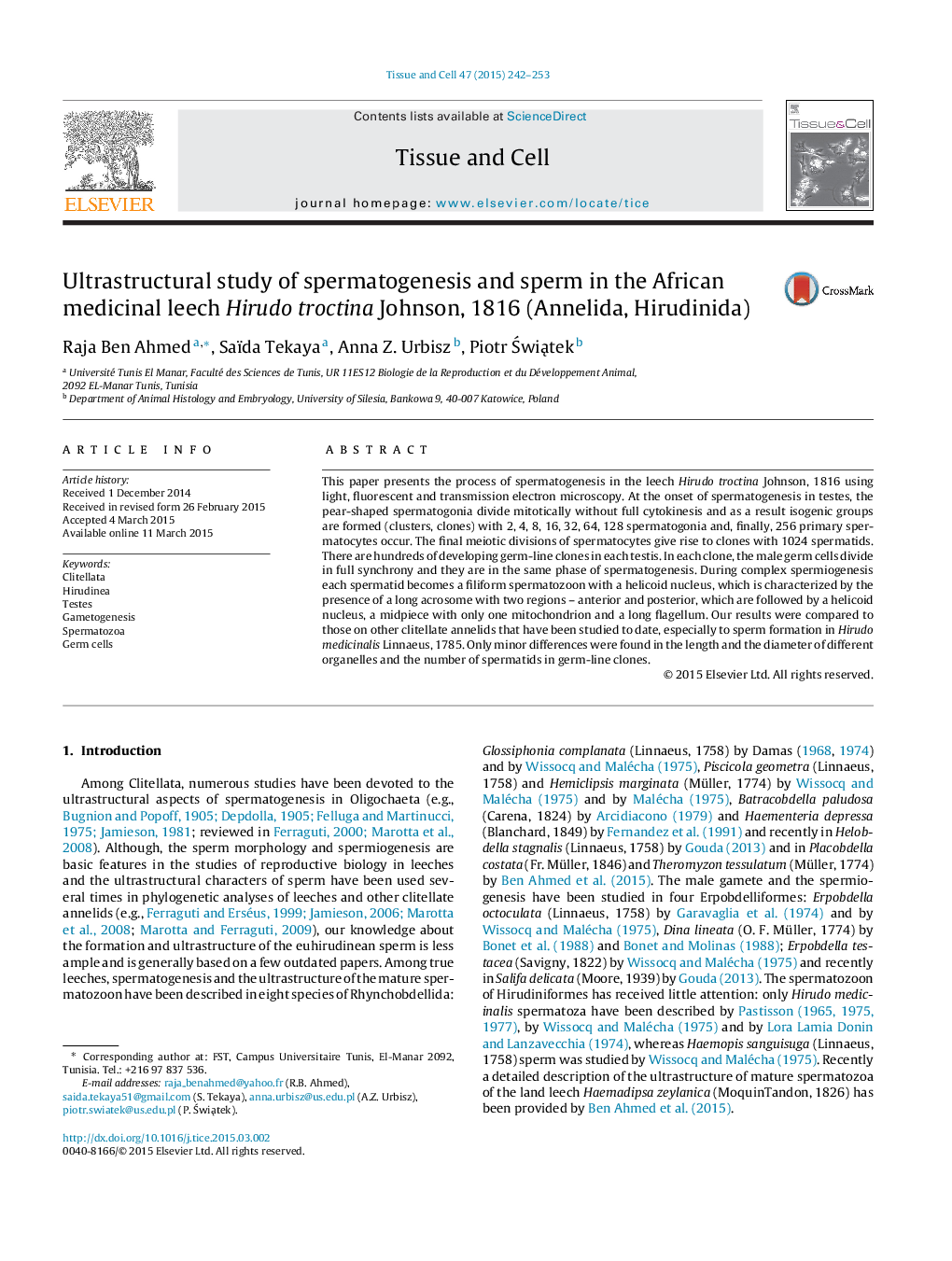| کد مقاله | کد نشریه | سال انتشار | مقاله انگلیسی | نسخه تمام متن |
|---|---|---|---|---|
| 2203583 | 1100509 | 2015 | 12 صفحه PDF | دانلود رایگان |

• We have examined the sperm formation in African medicinal leech H. troctina. There are few other studies devoted to gametogenesis in leeches from the economically important genus Hirudo.
• Ultrastructural information focuses on specific stages of spermatogenesis, spermiogenesis, and on the mature spermatozoa.
• The results obtained were compared with the old data on H. medicinalis and some differences (e.g., in the number of spermatids in a cyst) have been found.
This paper presents the process of spermatogenesis in the leech Hirudo troctina Johnson, 1816 using light, fluorescent and transmission electron microscopy. At the onset of spermatogenesis in testes, the pear-shaped spermatogonia divide mitotically without full cytokinesis and as a result isogenic groups are formed (clusters, clones) with 2, 4, 8, 16, 32, 64, 128 spermatogonia and, finally, 256 primary spermatocytes occur. The final meiotic divisions of spermatocytes give rise to clones with 1024 spermatids. There are hundreds of developing germ-line clones in each testis. In each clone, the male germ cells divide in full synchrony and they are in the same phase of spermatogenesis. During complex spermiogenesis each spermatid becomes a filiform spermatozoon with a helicoid nucleus, which is characterized by the presence of a long acrosome with two regions – anterior and posterior, which are followed by a helicoid nucleus, a midpiece with only one mitochondrion and a long flagellum. Our results were compared to those on other clitellate annelids that have been studied to date, especially to sperm formation in Hirudo medicinalis Linnaeus, 1785. Only minor differences were found in the length and the diameter of different organelles and the number of spermatids in germ-line clones.
Figure optionsDownload high-quality image (190 K)Download as PowerPoint slide
Journal: Tissue and Cell - Volume 47, Issue 3, June 2015, Pages 242–253